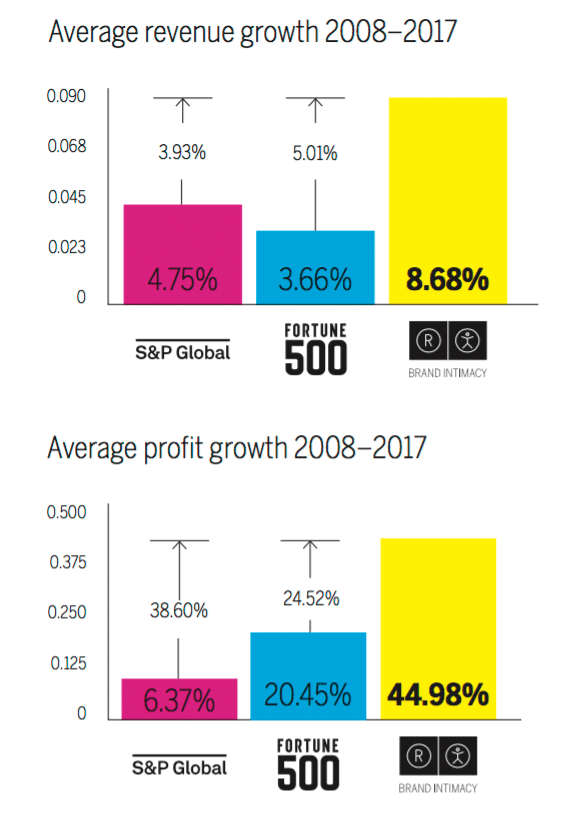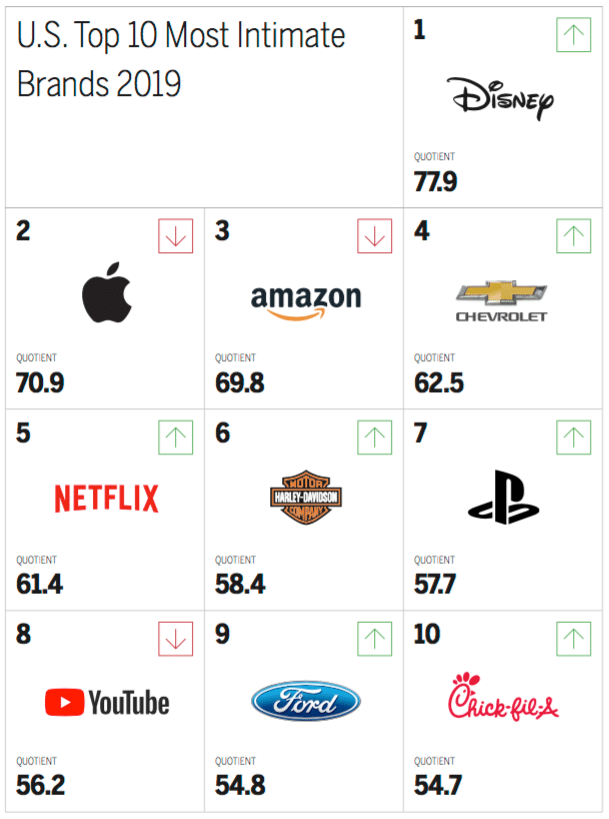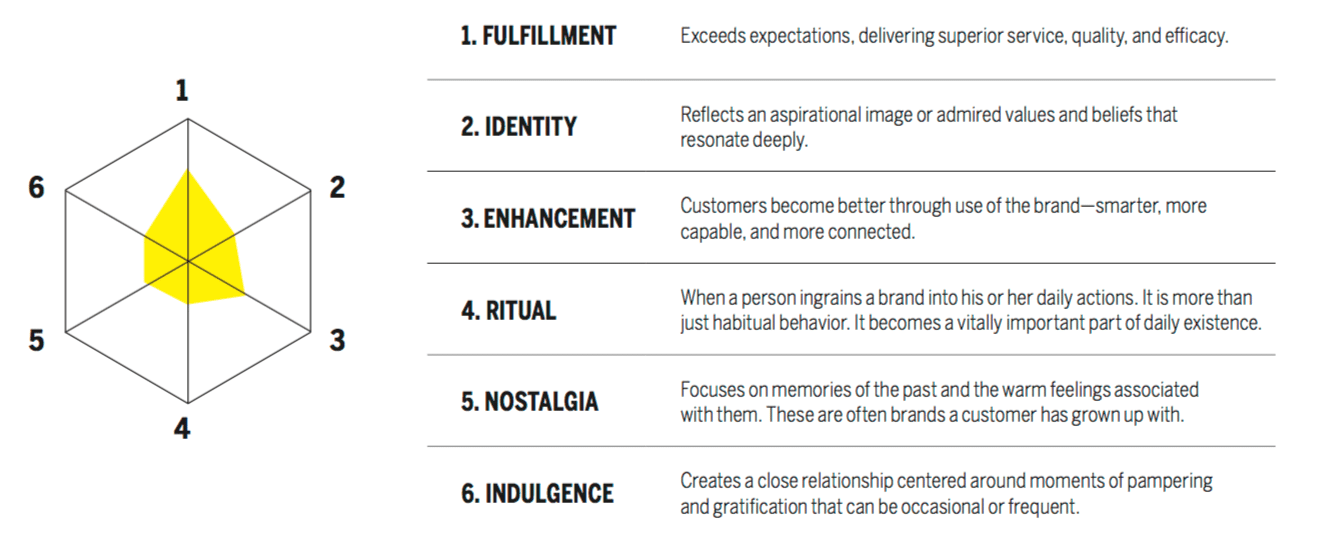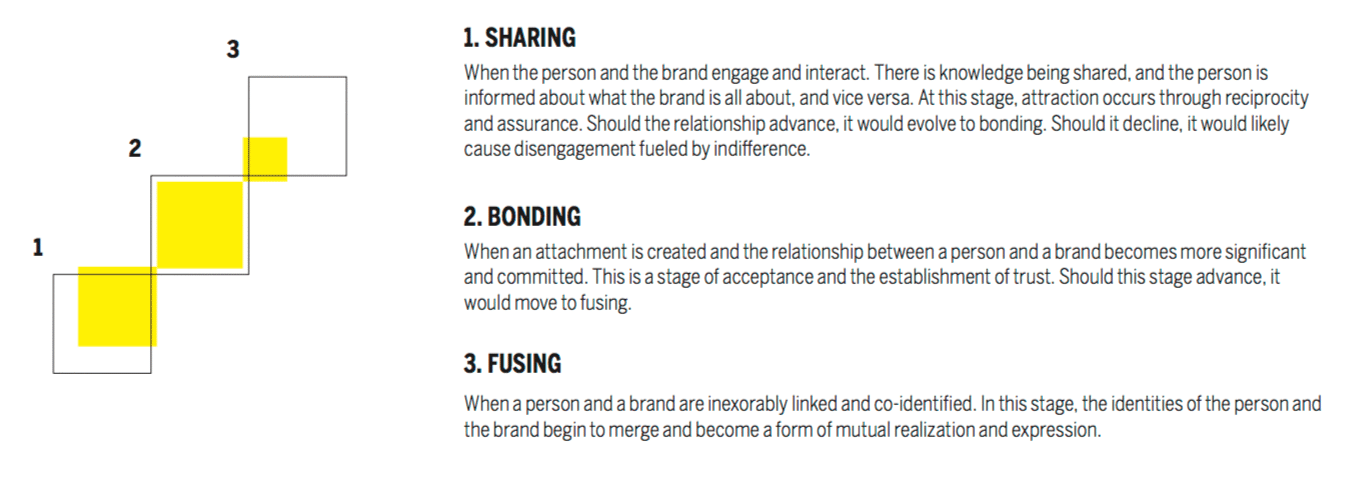Brand Intimacy is defined by marketing intimacy agency MBLM as the emotional science that measures the bonds we form with the brands we use and love—and the top intimate brands in the U.S. continue to significantly outperform the top brands in the Fortune 500 and S&P indices in both revenue and profit.
Apple is the perennial leader in brand intimacy, but was dethroned this year for the first time. Disney overtook Apple in the newly published Brand Intimacy 2019 Study,the largest study of brands based on emotions, released by MBLM. The two were followed by Amazon, which came in third.
The top 10 was also increasingly dominated by media & entertainment brands, comprising four out of the 10, up from three last year. The remaining brands in the top 10 were: Chevrolet, Netflix, Harley-Davidson, PlayStation, YouTube, Ford and Chick-fil-A.
What brands can learn from Apple decline in intimacy
Disney continues to dominate through its associations withnostalgia and the strong bonds it buildswith both men and women and across a variety of age groups. Meanwhile, Apple has lost some luster. Through its well-publicized missteps and consumer gadget fatigue, the brand, while strong, has declined in the U.S.
“We know that customers who form strong emotional bonds with brands are willing to pay more and are less willing to live without them. Insights from our annual ranking of brands are providing lessons and new strategies for business leaders and marketers,” said Mario Natarelli, managing partner of MBLM, in a news release.
“Apple’s fall to the second spot this year is substantial for three key reasons: first, it reflects the headwinds the company and brand are facing. Second, it highlights the fact that just like the human relationships that brand intimacy mimics, building and sustaining strong bonds is a continual process and third, the larger trend of the media & entertainment industry’s rise,” Natarelli added. “Our demand for escapism and our collective need for a distraction from reality is factoring heavily in the brands that rose in 2019.”
How intimate brands outperform the rest
 The average revenue growth from 2008-2017 was 8.68 percent for the top 10 most intimate brands, compared to 3.66 percent for Fortune 500 top brands and 4.75 percent for top S&P companies. In dollar value, this translates on average to the top 10 intimate brands having $37 billion more in total revenue over a 10-year period compared to the Fortune 500.The average profit growth during this same time period was 44.98 percent for brand intimate companies, compared to 20.45 percent for Fortune 500 companies and 6.37 percent for S&P companies.
The average revenue growth from 2008-2017 was 8.68 percent for the top 10 most intimate brands, compared to 3.66 percent for Fortune 500 top brands and 4.75 percent for top S&P companies. In dollar value, this translates on average to the top 10 intimate brands having $37 billion more in total revenue over a 10-year period compared to the Fortune 500.The average profit growth during this same time period was 44.98 percent for brand intimate companies, compared to 20.45 percent for Fortune 500 companies and 6.37 percent for S&P companies.
The 2019 study contains the most comprehensive rankings of brands based on emotion, analyzing the responses of 6,200 consumers and 56,000 brand evaluations across 15 industries in the U.S., Mexico and UAE. MBLM’s reports and interactive Data Dashboard, which features a brand ranking tool, showcase the performance of almost 400 brands, revealing the characteristics and intensity of the consumer bonds.
Additional significant findings in the U.S. include:
- Media & entertainment, automotive and technology & telecommunications were the top three industries, respectively
- Top intimate brands doubled the number of consumers willing to pay 20 percent more for them compared to lower-ranked intimate brands
- The top three brands for men were Disney, Apple and Chevrolet and for women they were Amazon, Disney and Apple. Males and females have the same overall average intimacy towards brands
- Apple and Disney built strong bonds with users in the younger demographics, whereas Amazon had more success with older users
- Millennials and users aged 35–54 were more intimate with media & entertainment brands, whereas users aged 54-64 did not have any brands from this category in their top five
- Millennials selected YouTube as their top brand, while the age groups from 35-54 and 54-64 both selected Amazon
- Those making between $35,000-$100,000 selected Amazon as their top most intimate brand, while those making between $100,000-$200,000 selected Apple
- Brands that are part of the smartphone ecosystem generally outperformed those that are not. The average Brand Intimacy Quotient for those in the ecosystem was 38.8, which is significantly higher than the overall study average of 31.0
The top intimate brand in the other two countries in MBLM’s study, the UAE and Mexico, was Apple.
The six archetypes of intimate brands:
The stages of brand intimacy, which reveal and measure the depth and degree of intensity of an intimate brand relationship:
During 2018, MBLM with Praxis Research Partners conducted an online quantitative survey among 6,200 consumers in the U.S. (3,000), Mexico (2,000), and the United Arab Emirates (1,200). Participants were respondents who were screened for age (18 to 64 years of age) and annual household income ($35,000 or more) in the U.S. and socioeconomic levels in Mexico and the UAE (A, B and C socioeconomic levels).











